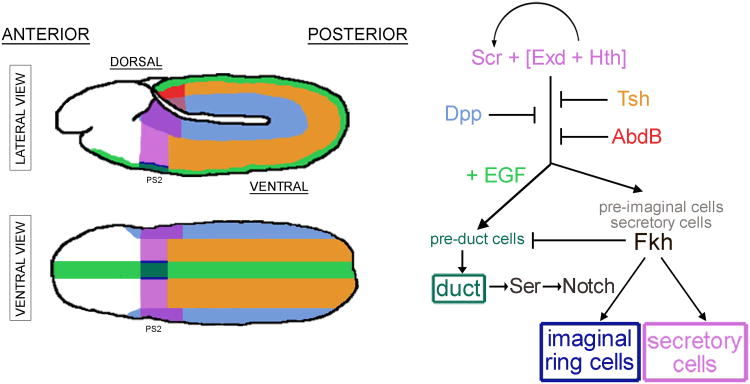Figure 2.
SGs are specified by the integration of patterning information along both major body axes. Scr (purple in cartoon), a Hox protein expressed in PS2 and dorsal cells of PS3, is the only spatially-regulated activator of SG cell fates. The more globally expressed Exd and Hth Tale-homeodomain proteins are also required for SG formation and these proteins function at multiple levels. Tsh (brown in cartoon), expressed in PS3-13, and AbdB (red in cartoon), expressed in PS14, block SG activation in the trunk and abdomen. SG formation is limited to the ventral cells of PS2 by Dpp signaling (blue in cartoon) in the dorsal cells. EGF-signaling (green in cartoon) along the ventral midline specifies the duct cell fate by blocking expression of Fkh. In turn, Fkh plays a major role in maintaining the secretory cell fate by regulating itself as well as multiple other secretory-specific genes and by blocking expression of duct-specific genes. Ser, which is expressed in duct cells, signals adjacent Notch expressing cells in the common secretory/imaginal ring cell primordia to become imaginal ring cells (dark blue in diagram) – the precursors to the adult SG.

